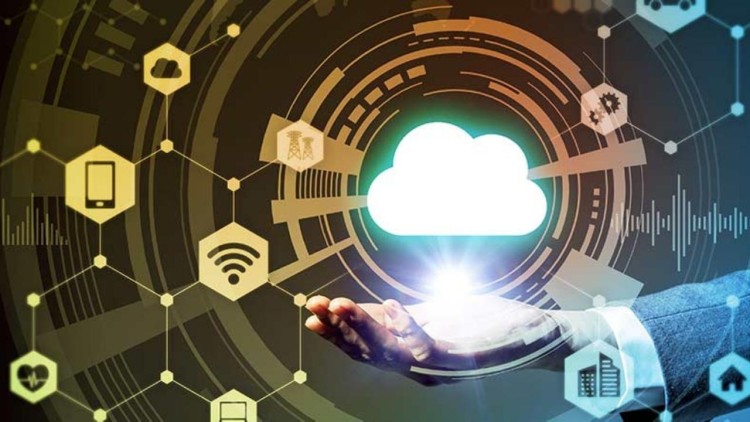Understanding Virtual Desktop Infrastructure (VDI) and its Advantages
 Sneha
Sneha
Virtual desktop infrastructure (VDI) is a desktop virtualization technology that hosts desktop operating systems on centralized servers in a data center rather than on physical PCs or thin clients in offices. With VDI, the desktop environment including operating systems, applications, documents, and user settings are virtualized and delivered to users through a managed, centralized infrastructure. Users access their virtual desktops from any networked client device like PCs, laptops, tablets or smartphones.
Benefits of Centralization
A key benefit of Virtual Desktop Infrastructure is centralized management and administration of desktop environments. Since the desktops are virtualized and hosted on centralized servers, IT teams can manage all operating systems, applications, security policies, patches and updates from a single console rather than individual devices. This simplifies administration and makes it easier to roll out desktop changes across the organization quickly and consistently. Centralization also makes desktop environments more scalable - additional virtual desktops can easily be provisioned on demand as user requirements grow without needing to purchase and install new PCs. Virtual desktops simplify hardware requirements as well - users can access their desktops from any thin client hardware without needing high specification devices.
Enhanced Security with Virtual Desktop Infrastructure (VDI)
VDI solutions enhance security by isolating desktop environments in the data center away from physical endpoints. Since user data does not reside on physical devices, sensitive information is protected even if devices are lost or stolen. Administrators have tighter control over access to data and applications. They can centrally manage access controls, encryption, firewalls and antivirus protections. Virtual desktops also prevent data from persisting on endpoints after use - at the end of every session, changes are rolled back and the virtual machine is automatically refreshed with the standard gold image configuration. This reduces security vulnerabilities posed by unmanaged endpoints.
Desktop Flexibility and Portability
With VDI, users are no longer tied to specific physical devices. They can access their full desktop environment from any internet-connected device. This brings flexibility for flexible workstyles - users can work from offices, home or on the go from any device they choose. For organizations, VDI facilitates workforce mobility and supports Bring Your Own Device (BYOD) scenarios. It also simplifies desktop replacement - when older devices reach end-of-life, rather than replacing the hardware, users can simply be directed to newer thin clients without affecting their familiar desktop environment.
Streamlined OS and Application Management
Managing multiple combinations of operating systems, applications and updates across a fleet of physical PCs can be complex and time-consuming. VDI streamlines image management by centralizing desktop environments on master images which are then cloned to create individual virtual desktops. Any changes to the master image are automatically rolled out to all cloned VDIs instantly. This makes application and OS patches, upgrades and new rollouts simple - they only need to be applied once at the image level rather than on many physical machines. VDI helps maintain uniform environments across user groups and removes inconsistencies.
Improved Resource Utilization
With VDI, servers are utilized more efficiently as their processing, memory and storage resources can be dynamically allocated and reallocated based on real-time user demands. Virtual desktops allow higher server consolidation ratios than physical desktops, reducing hardware costs and energy consumption. For users, a single pool of virtual computing power delivers a more responsive experience than trying to get work done on under-powered physical devices. Shared servers are also easier and less expensive to scale than physical infrastructure spread over multiple offices. Organizations benefit from reducing costs associated with maintaining separate hardware assets.
Environment Customization and Personalization
Unlike thin clients coupled with traditional server-based computing, Virtual Desktop Infrastructure (VDI) delivers full desktop functionality equivalent to physical PCs. Users get the familiar experience of a personalized, customizable Windows, Mac or Linux desktop environment. They can easily customize settings, install additional required applications, save favorites and generally personalize their virtual workspace as needed for maximum productivity. At the same time, IT gets more control over personalization options through policies and profiles to balance user experience with security and manageability requirements.
Business Continuity and Disaster Recovery
Critical business data, applications and desktop environments can be easily backed up and replicated when using VDI. If an office location faces downtime due to planned maintenance or unexpected disasters, workers can rapidly get up and running from alternate sites or home offices without loss of productivity. Virtual desktops simplify failover and provide redundancy to ensure continuity of operations across disruptive events. Recovery is as simple as powering on replacement servers to access backed up VM images, mitigating business impact. Unlike physical devices that could be damaged during disasters, virtual infrastructure offers higher resiliency.
Improved Control Over Legacy Applications
Many organizations grapple with supporting aging, legacy applications that are difficult to upgrade or transition to newer platforms due to dependencies, complexity and high costs involved. VDI enables encapsulating these applications within isolated, contained virtual environments and centrally delivering them without compromising security. Even older software that is not compatible with current operating systems can be safely run via virtual desktops while keeping servers and endpoints up-to-date. This extends the useful life of valuable legacy systems.
VDI offers compelling advantages over physical desktop delivery across key IT priorities like security, management and mobility. Organizations gain more control over provisioning and scaling distributed desktop computing resources efficiently based on real-time demands. Users benefit from ubiquitous access to personalized virtual workspaces across any device. When combined with other technologies in digital transformation initiatives, VDI is a powerful enabler of agile workforce productivity.
Get more insights on Virtual Desktop Infrastructure
Subscribe to my newsletter
Read articles from Sneha directly inside your inbox. Subscribe to the newsletter, and don't miss out.
Written by
